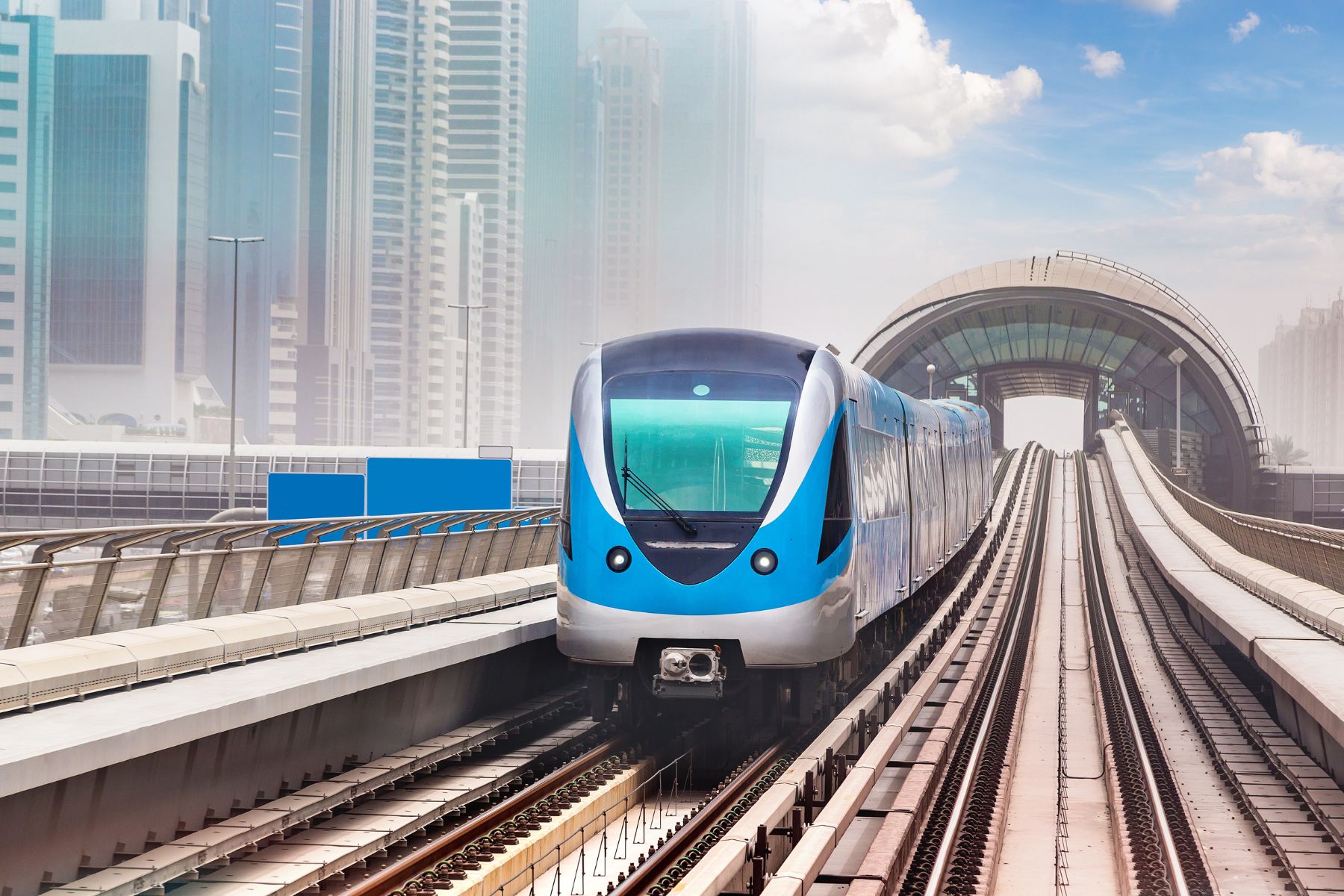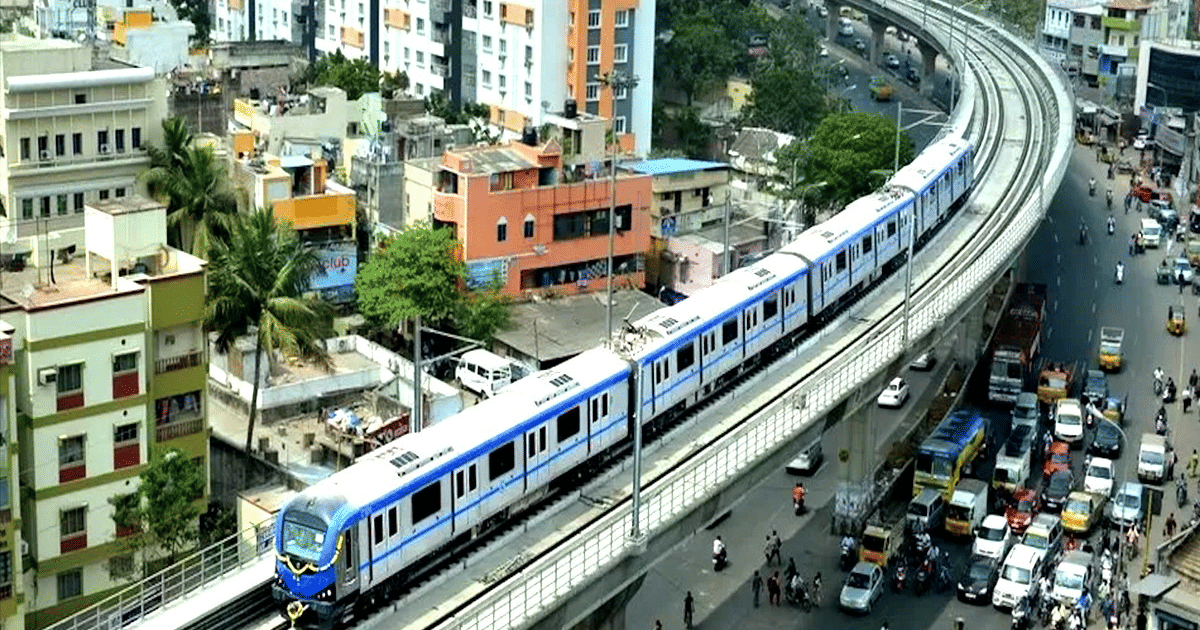Benefits of expand metro in chennai real estate
Metro Rail in Chennai
The Chennai Metro is a rapid transit system serving the city of Chennai, Tamil Nadu, India. The first phase of the project was opened to the public on June 29, 2015, making it the first operational metro in South India. The metro rail system has been designed to alleviate traffic congestion in the city and connect important commercial and residential areas with each other.
The Chennai Metro is operated by the Chennai Metro Rail Limited (CMRL), a joint venture of the Government of India and the Government of Tamil Nadu. The total length of the metro rail network is currently 45 km, with 37 stations operating in Phase I. The network is expected to expand to 120 km by 2026, making it one of the largest metro systems in India.
The Chennai Metro offers a convenient and affordable mode of transport for commuters in the city.

Connectivity to metro rail offers numerous benefits, including reduced travel time, enhanced accessibility, lower transportation costs, and alleviated traffic congestion. It also contributes to economic growth and increases property values. Metro connectivity makes areas more desirable for both residential and commercial investments, providing significant long-term returns.
The best areas for commercial real estate investment in chennai are typically those near metro stations and along metro routes. These locations offer superior connectivity and infrastructure, making them highly attractive to businesses. Areas like Anna Salai, Guindy, Mount Road, and planning for sriperumbudur metro construction are prime spots due to their proximity to metro lines, fostering increased business activity and property value appreciation.
Metro Expansion and Its Impact on Chennai Real Estate
Connectivity
Chennai Metro area expansion is redefining urban mobility, providing faster and more efficient connectivity across the city. Residents will experience shorter commutes, especially in metro-connected neighbourhoods, making these areas highly desirable. Improved metro access is expected to bring previously underdeveloped regions into the mainstream, enhancing the appeal of Chennai real estate.
Property Values
Properties near metro stations are witnessing a rise in demand due to their enhanced connectivity. The convenience of living close to metro corridors is attracting both end-users and investors, pushing property values upward.
Urban Revitalisation
Chennai metro area expansion is driving urban revitalisation, by modernising infrastructure and fostering economic growth. Redevelopment projects around metro stations are creating well-planned neighbourhoods with a focus on sustainability. This shift is improving the city’s overall liveability, making Chennai an attractive destination for property investment and long-term residency.
Benefits of expanding Metro
Demand
The demand for various property types is rising in metro-connected neighbourhoods. Luxury apartments are the most sought-after, particularly among urban families seeking convenience and connectivity.
Reduction in Traffic Congestion
By offering an efficient alternative to road transport, the metro alleviates traffic congestion. This improvement enhances daily commutes, saves time, and boosts productivity for residents.
Environmental Benefits
Metro connectivity promotes the use of public transport, reducing reliance on private vehicles. This shift helps lower carbon emissions and minimise air pollution, contributing to a cleaner and greener city.
Economic Growth
Metro-connected neighbourhoods stimulate economic activity, by attracting businesses, retail outlets, and commercial ventures. This growth leads to job creation and enhances the city’s economic resilience.

METRO BOOST REAL EATATE
The expansion of the Chennai Metro has caused an increased demand for properties near metro stations and on their routes. Riding on the convenience factor and the affordability, real estate prices along Phase I and the rest of the metro phases are seeing an upward swing. The increased mobility attracts many buyers to choose their property in and around the development. A JLL report mentioned that after Phase I of the Chennai metro became operational, properties around the areas witnessed a 15-33 % hike.
Phase I of the Chennai metro became operational in a phased manner. In the first stage, the section between Alandur and Koyambedu was commissioned in 2015. The first underground line between Thirumangalam Metro Station and Nehru Park Metro Station was inaugurated in 2017. The Underground stretches – Nehru Park Metro Station to Chennai Central Metro Station and Saidapet Metro Station to AG-DMS Metro Station were opened in 2018. In 2019, the stretch from AG-DMS to Washermenpet of blue line was opened, completing a 45 km network under Phase I of the Metro Rail Project.
Now that Phase II is under construction, realtors suggest directly investing in areas near the upcoming metro stations would be profitable.
The obvious benefits of metro rail are a sharp reduction in commuting time, improved accessibility, and less traffic congestion. As realtors and individuals are in a hurry to buy properties in and around metro projects, the property value is appreciating quickly. It has also opened up a lot of redevelopment opportunities.
Projects ranging from plots to high-rise apartments and villas are available in the city for investment. As many realty advisors note, Chennai has been witnessing steady real estate growth, and the pandemic did not impact it much. Due to the metro stations in corridor Phase II and Phase III, which are under progress, the south and west Chennai have witnessed major momentum in real estate projects.
Also, the presence of the Chennai metro has improved the city’s overall appeal as a thriving urban city. Even with the first Phase, the change is evident as people find it easy to commute across the city, including to railway stations and airports, thus saving time and money on private transport.
With most offices returning to work from office mode, many people have started relying on the metro for their commute, which is less chaotic and easy on the pocket.
Some locations where Metro work is going on for Phase II and III are Madhavaram, Porur, Poonamalle, Guindy, OMR, Thoraipakkam, and more. Investing in these areas would be one of the most profitable financial investments one would be making in real estate. With the rental yield returning to pre-COVID levels, nothing should stop a shrewd investor in you from purchasing a property.
Metro rail has been causing a revolution in real estate, and in some places, property appreciation has gone over 10X. Hence, investing early in development areas will be a sure-shot win for real estate buyers.
Considerations
Despite the promising opportunities, the metro expansion also presents challenges that need to be managed carefully. Issues such as land acquisition, regulatory hurdles, and the pace of infrastructure development can influence the project’s progress and the timing of its benefits. Investors and property developers must navigate these complexities and conduct thorough market research to assess the risks and opportunities before committing resources. Strategic planning and risk management will be crucial to successfully capitalizing on the potential real estate boom triggered by the metro expansion.
The expansion of the Chennai Metro Rail network is set to be a game-changer for the city’s real estate sector. By enhancing connectivity, increasing demand for commercial spaces, and creating opportunities for mixed-use developments, the metro expansion will unlock significant commercial potential. Stakeholders who leverage these opportunities can play a key role in the city’s economic growth while benefiting from the rise in property values and the creation of vibrant urban communities. As the project unfolds, careful consideration of the associated challenges and strategic investment will be essential to maximizing the benefits of this transformative development.

